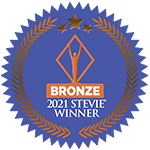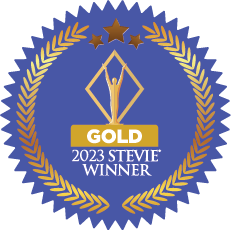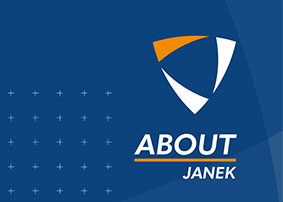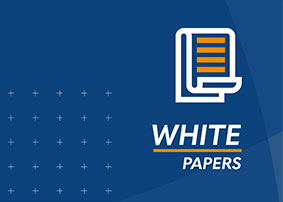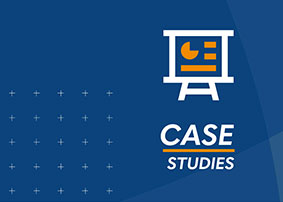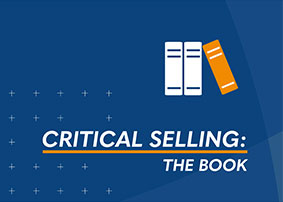Developing Stronger Sales Proposals

There’s having a sales call—in other words, making crucial connections that convince your prospect to believe in your solution—and then there’s actually writing up the solution in a sales proposal. Verbalizing the solution might come naturally to you, but writing it out in the sales proposal not only takes time, it takes organization, strategy, and finesse. You may have made great headway in the sales meeting, but creating a poorly composed proposal will cause you to lose traction with the prospect.
The next time you find yourself drafting a new sales proposal, keep these key guidelines in mind:
Have Them at Hello
A polite and friendly personalized letter is always a great launching off point for your proposal. Start out thanking the prospect for their time and interest, and let them know you understand their situation by summarizing their objectives and the ways your solution will help them meet that goal. Focus the writing on the customer’s needs by outlining how your solution will solve their challenges. Be careful not to swing too far into talking about the value of your company and how amazing the features of your solution are. Instead, always bring it back around to the point: meeting the needs of the customer.
Then take a deeper dive and clearly show the value of your solution. Be precise when demonstrating how your products and services will not only meet needs, but how it will exceed them by benefitting the customer over the long term. There will likely be various ways your offering may help the customer. Bullet points are great for organizing information, so think about using them to list out the various value propositions. Bullets are also a way to communicate at a glance and not overwhelm the prospect with long paragraphs.
Serve up the Info in Digestible Chunks
Just as you might do with bullet points, use various other ways to organize the information you’re including. A table of contents not only orders the information, it gives the prospect a preview of what to expect, and it allows them to find what they’re looking for if there’s something specific they want to see in the proposal. Also, break up the text with headers and titles. Keep these straightforward and simple as well, and use words that clearly and efficiently describe what’s to come, like, “objectives,” “deliverables,” “benefits,” “implementation timeline,” “cost,” and “payment schedule.”
Keep It Simple and Straightforward
Don’t make the proposal overly wordy or complex. Simplicity is key here—so is clarity—because you want the prospect to get what you’re saying. Think about who they are based on when you first spoke with them; were they techy? Were they old school? Did they have a lot of patience for the details of your solution, or were they wanting you to sum up and move on to the next thing? All of that character info you collected over the phone lets you know what they’re about, so choose language for your proposal that reflects who they are. In other words, communicate the way they do, or the way they like to be communicated to. You’ll lose them, for example, if your proposal is peppered with a lot of technical specs, industry jargon and/or acronyms that may not be clear to an old-school customer. And/or, if you go on too long and they’re impatient, they won’t bother to wade through all of what you have to say.
Be More You Than I
The proposal is about the prospect and what you can do for them. The language you choose for your proposal needs to indicate that as well, so be mindful of how you’re starting off your paragraphs and sentences. When writing, our natural inclination—and sometimes the easiest thing to do—is to lead with words like “I” and “We.” Even if your intention is to focus on the customer, I/We sentences can make it sound like it’s all about you, when it should be all about the customer. Keep the emphasis on the prospect by using the word “You” with more frequency that “I” or “We.”
Get the “Deets” Right
Once you’re gotten down everything you need to say, don’t just hit the send button and call it good. This is the time to review what you’ve put down, being mindful of the details. You do not want to leave typos and poor grammar in your wake. Is every word spelled correctly? How about the names? What you might think of as an honest mistake could land your proposal in the no pile lickety-split. Think about it—if you’re sloppy at this stage, that won’t exactly instill confidence in the prospect that you’ll be “neat” about things down the line.
It’s not that you have to write the great American novel here, or be a poet or a playwright, but you do need to know who your audience is and how to speak to them from the page. Your job as a proposal writer is to capture and keep the attention of the prospect—and, of course, inspire them to want to go with you.

- Account Planning (16)
- Awards (42)
- Client Testimonial (37)
- Personal Branding (21)
- Podcast (12)
- Research (77)
- Sales Career Development (90)
- Sales Coaching (164)
- Sales Consulting (141)
- Sales Culture (181)
- Sales Enablement (380)
- Sales Leadership (111)
- Sales Management (267)
- Sales Negotiation (11)
- Sales Prospecting (136)
- Sales Role-Playing (19)
- Sales Training (242)
- Selling Strategies (279)
- Soft Skills (78)
- Talent Management (101)
- Trusted Advisor (29)
- Virtual Selling (57)
- Webinar (13)



